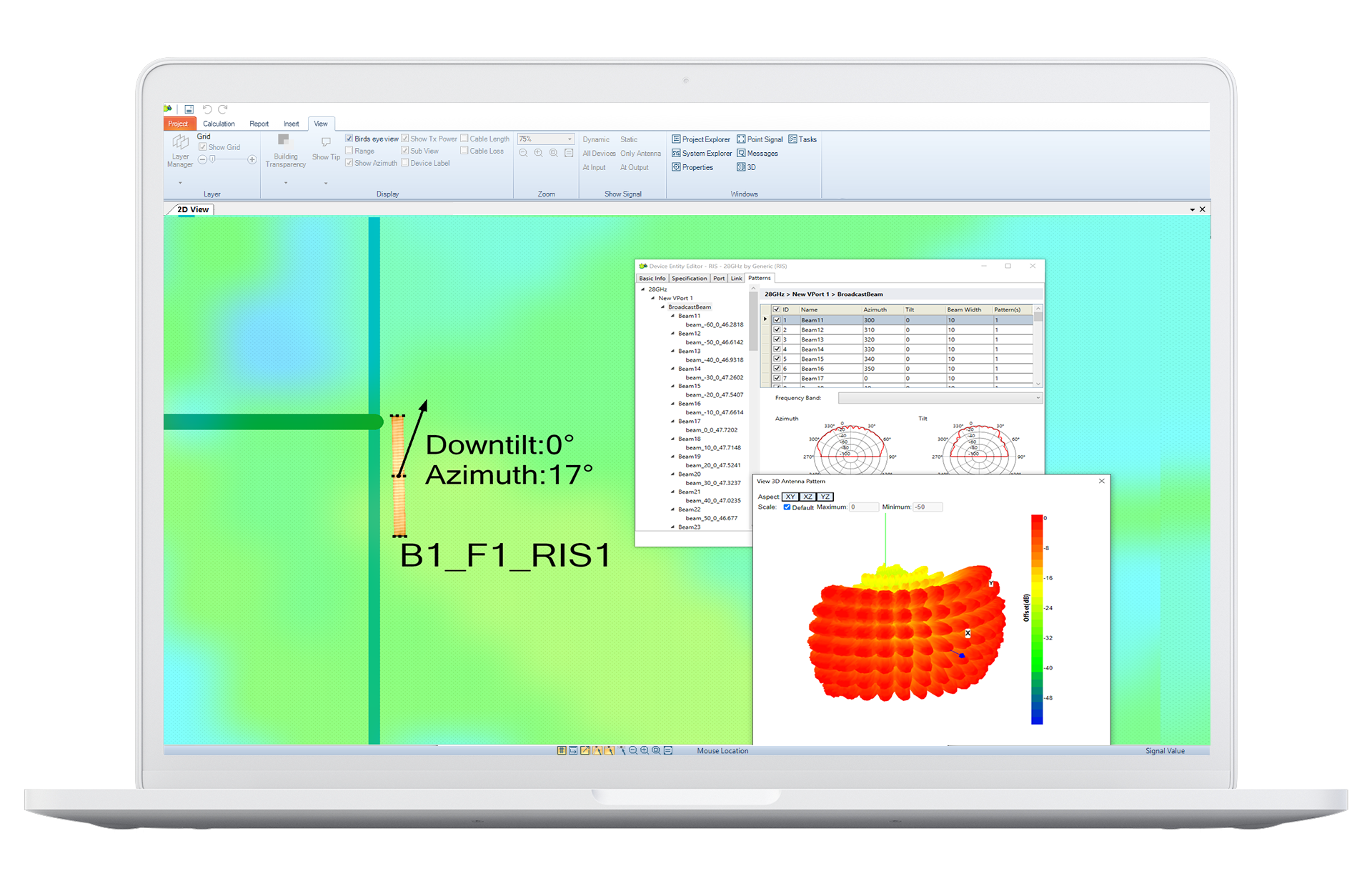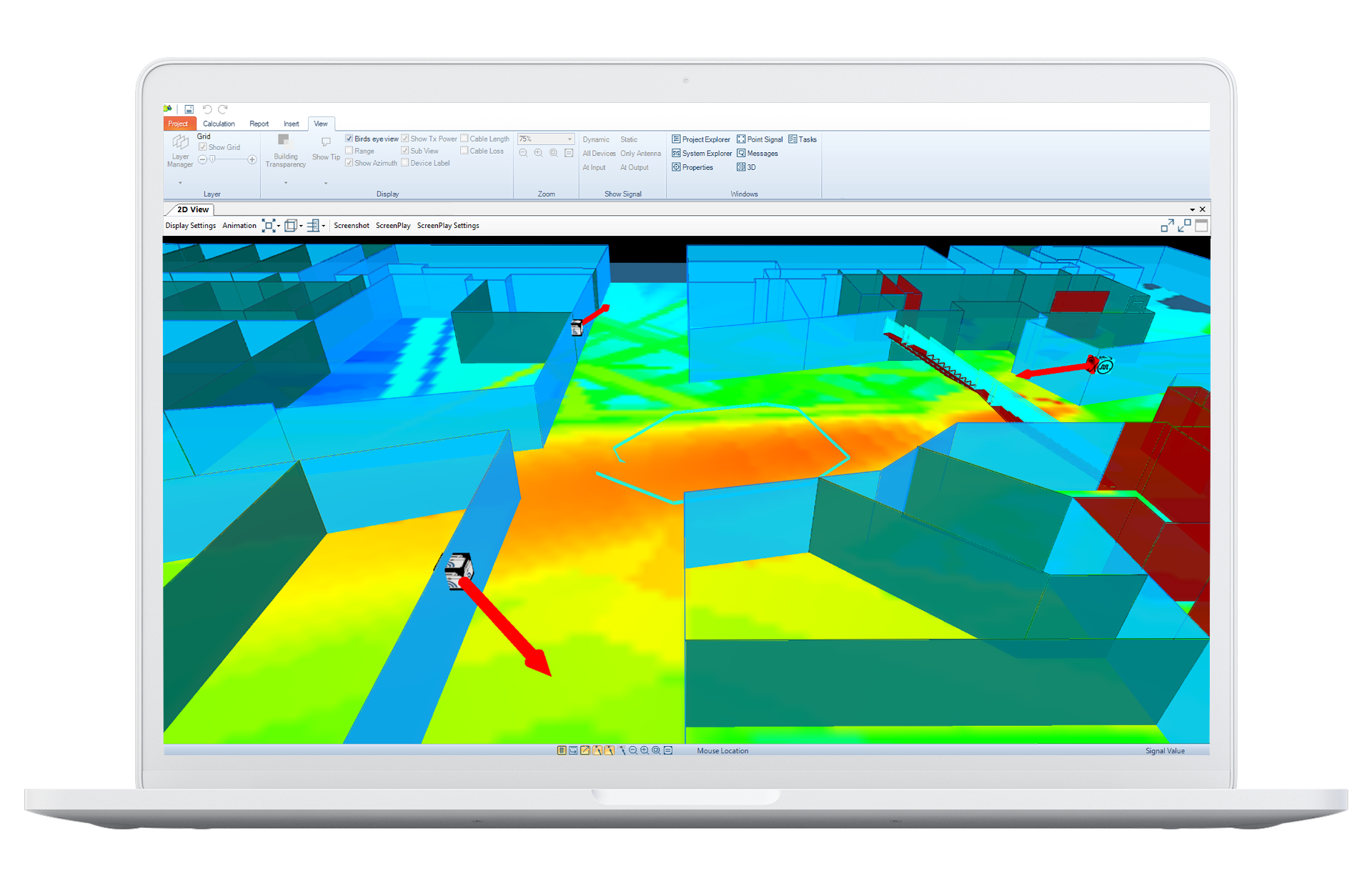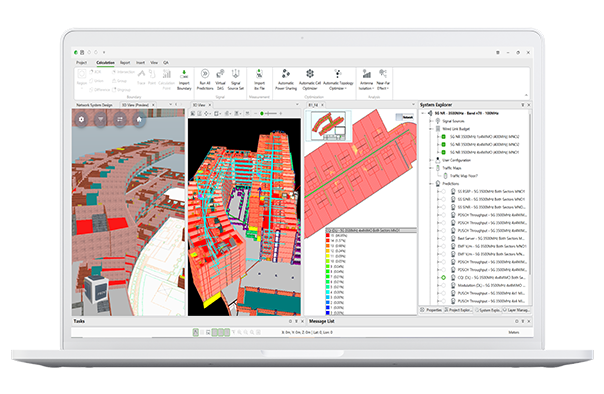Imagine a world where the walls around you are not just static structures but intelligent agents that actively shape and optimise wireless signals. This is precisely what Reconfigurable Intelligent Surfaces, also known as Intelligent Reflecting Surfaces or Software-Defined Surfaces, promise to achieve. These surfaces comprise of numerous tiny elements, such as antennas or passive reflecting units, that can dynamically manipulate electromagnetic waves. Here's how they work:
-
Wave Manipulation: RIS elements serve as "smart mirrors" for wireless signals, capable of altering the phase, amplitude, and direction of incoming electromagnetic waves, redirecting them to their intended destinations.
-
Wireless Communication Enhancement: RIS technology can improve the performance of wireless communication systems. By mitigating signal attenuation, multi-path fading, and interference, it boosts signal quality, extends coverage, and increases data rates.
-
Energy Efficiency: RIS can reduce the power consumption of wireless devices by optimizing signal propagation. This is crucial for battery-operated devices and the sustainability of the Internet of Things.
-
Security: RIS adds a layer of security to wireless communications by dynamically adjusting signal paths, making it harder for eavesdroppers to intercept data.
-
Indoor Localisation: RIS aids in precise indoor positioning by shaping signal propagation, enabling applications like asset tracking and location-based services.
-
Low-Profile Design: These surfaces can be discreetly integrated into various environments, making them suitable for smart buildings, urban environments, and beyond.
-
5G and Beyond: RIS is considered a promising technology for 5G and future wireless standards, addressing challenges posed by higher frequencies and data demands.
 Modelling a static device in Ranplan Professional, where the radiating waves of RIS are generated, manipulated and directed to the intended destination.
Modelling a static device in Ranplan Professional, where the radiating waves of RIS are generated, manipulated and directed to the intended destination.
How to optimize the deployment of Reconfigurable Intelligent Surfaces (RIS)
While RIS technology holds immense promise, harnessing its potential requires meticulous planning and optimization. This is where network planning software comes into play. Here's how it complements RIS:
- Simulation and Modelling: Network planning software utilizes sophisticated electromagnetic field simulation techniques to simulate the interaction between RIS elements and incoming electromagnetic waves. This powerful tool provides network planners with precise data, enabling them to meticulously adjust the placement and configuration of RIS elements. This fine-tuning process is indispensable for optimizing signal quality and expanding coverage to its fullest potential.
- Coverage and Capacity Optimization: Utilising detailed propagation models, including ray tracing and path loss models, network planning software analyses signal strength, interference levels, and data rates across the coverage area. These models take into account various environmental factors, such as building materials, obstacles, and reflections. With this technical analysis, network planners can identify areas with poor signal quality or high interference and strategically place RIS elements to enhance coverage and capacity. This optimization process ensures that RIS elements are positioned where they can have the most significant impact on improving communication.
 Heat map of indoor coverage with no RIS Heat map of indoor coverage with two RIS
Heat map of indoor coverage with no RIS Heat map of indoor coverage with two RIS
Based on the ray tracing model and path loss model, the RISs are precisely deployed to optimize the signal coverage by analysing various environmental factors.
-
Resource Allocation: Efficient resource allocation in RIS involves determining which elements should modify the incoming signals and to what extent. Network planning software uses algorithms based on signal-to-noise-plus-interference ratios (SNIR) and channel quality indicators to dynamically allocate RIS resources. This means RIS can adapt to changing network conditions and communication demands, optimizing overall network performance.
 Dynamic wave manipulation of RIS on walls in Ranplan Professional, showing resulting coverage.
Dynamic wave manipulation of RIS on walls in Ranplan Professional, showing resulting coverage.
- Comparing Different Manufacturers: As the adoption of RIS grows, an influx of manufacturers entering the market will lead to a diverse range of offerings. Network planning software will be crucial in evaluating and comparing factors such as hardware specifications, software compatibility, scalability and pricing structures to make informed decisions. These considerations extend beyond technical requirements and encompass cost-effectiveness and alignment with specific objectives, to guide engineers in deploying the most suitable RIS solution.
-
Interference Management: In crowded wireless environments, interference management is critical to maintaining high-quality communication. Network planning software leverages interference prediction models that consider the behaviour of nearby wireless networks and devices. It also fine-tunes RIS settings based on real-time interference measurements, allowing RIS elements to work harmoniously with existing wireless infrastructure, ensuring the reliability of wireless communication.
-
Scalability and Future-Proofing: To ensure that RIS deployments remain adaptable and scalable as networks evolve, network planning software incorporates scalability algorithms and design flexibility. It also considers factors such as spectrum allocation and evolving standards like 5G and beyond. These scalability features enable network planners to easily plan the expansion of RIS deployments as network demands grow, ensuring that RIS remains relevant and effective in the face of evolving technologies and communication standards.
The Future of Wireless Communication
In summary, the technical intricacies of network planning software are crucial in optimizing the deployment and operation of Reconfigurable Intelligent Surfaces. Through advanced simulations, resource allocation algorithms, interference management techniques, and scalability considerations, network planning software plays a fundamental role in unlocking the full potential of RIS technology in enhancing wireless communication. It is the synergy between these technical capabilities that ensures RIS deployments are efficient, adaptable, and capable of meeting the ever-evolving demands of modern wireless applications in Smart Cities, the Internet of Things and beyond. Looking ahead, this formidable combination promises a wireless communication landscape that is faster, more reliable, and incredibly versatile, setting the stage for a future where connectivity knows no bounds.
RIS modelling is one of the many new features of the Ranplan 6.9 release.





